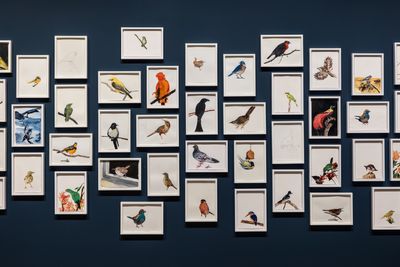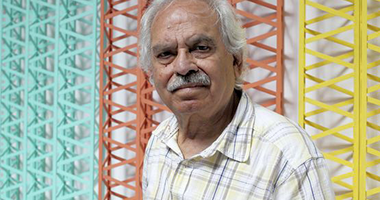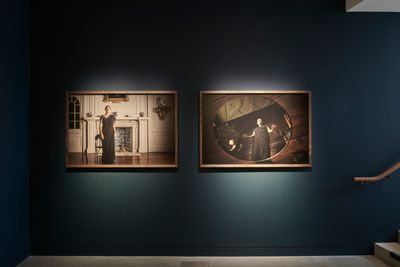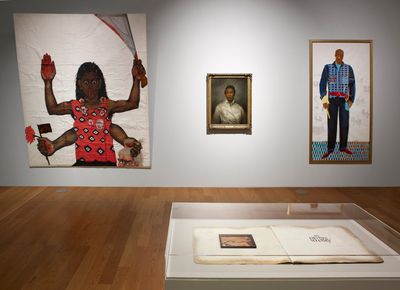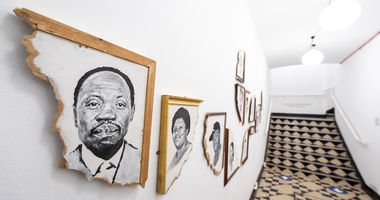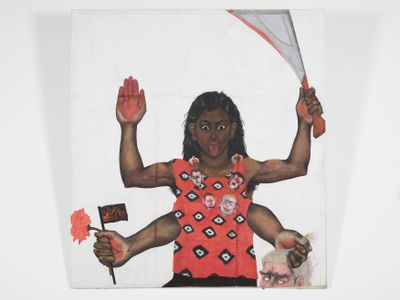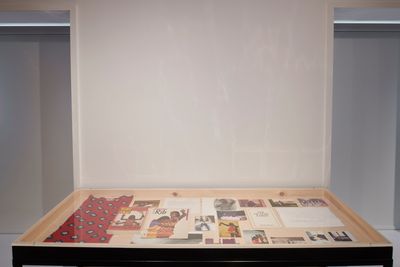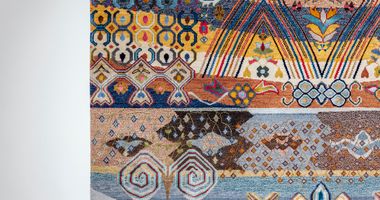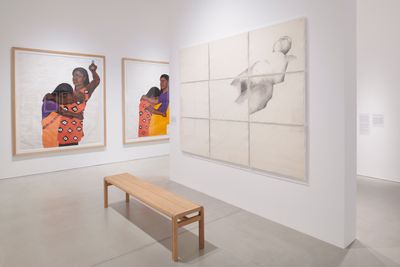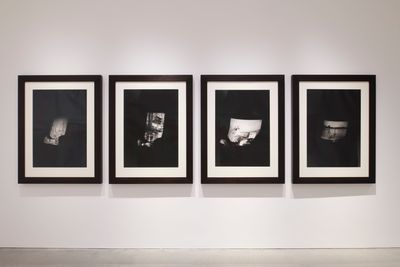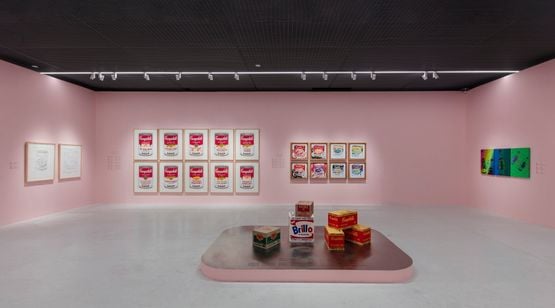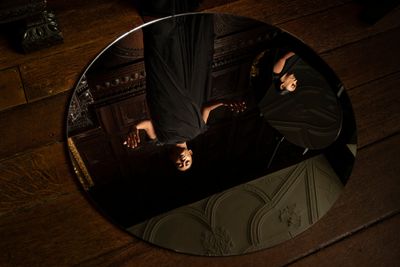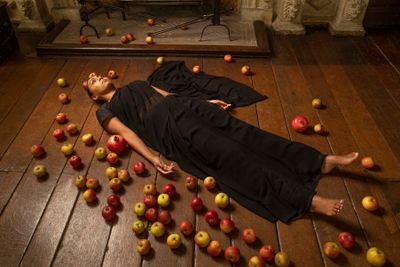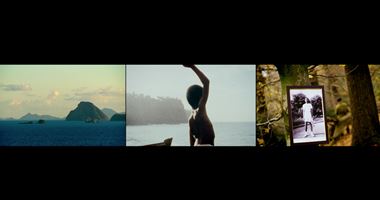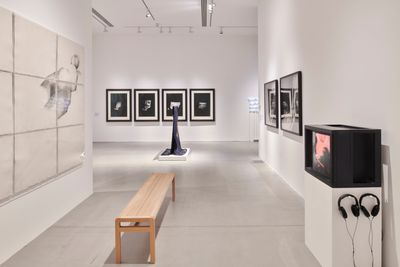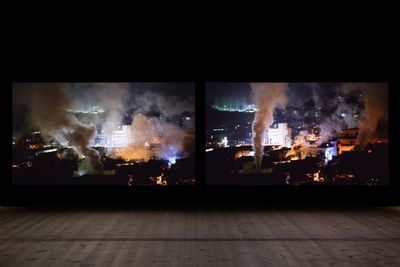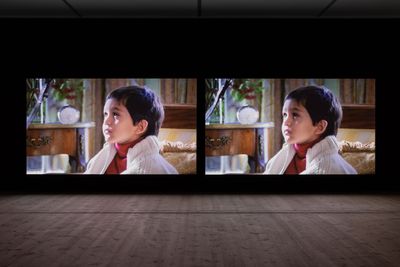Sutapa Biswas Crosses Time and Space
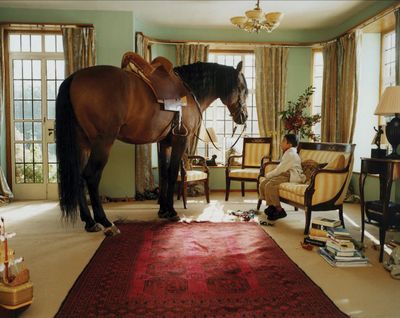
Sutapa Biswas, Birdsong (2004, re-mastered 2021) (still). Courtesy the artist.
It's fitting that Sutapa Biswas and Lubaina Himid are both staging major institutional shows in the U.K. right now, given their role in the Black arts movement in Britain in the 1980s.
At the time, anti-racist uprisings erupted across England against state-sanctioned discrimination, and a generation of artists challenged institutional racism on the streets and in the gallery.
A photocopy of a conversation between Biswas and Himid, orchestrated as part of Biswas's dissertation at Leeds University, appears in a research space for Lumen, Biswas's first substantial solo show in 14 years at Cambridge University's Kettle's Yard (16 October 2021–30 January 2022) and Baltic Centre for Contemporary Art in Gateshead (26 June 2021–20 March 2022).
The discussion formed part of Biswas's 1985 dissertation on Black women artists in Britain, in which Biswas credits Himid for prompting a pivot in focus from America to Britain.
Historically, the Black arts movement in Britain is anchored to the first National Black Art Convention in 1982 at Wolverhampton Polytechnic. It was organised by the BLK Art Group, formed in 1979, whose members include Keith Piper and Claudette Johnson.
Some artists associated with the movement embraced a conception of political Blackness, among them Himid and Biswas, which echoed the need for a coalition of colonised and diaspora peoples that could stand against the hegemony of British white supremacy at the time.
As cultural theorist Stuart Hall asserted back then, 'the term "black" in the British context always included "migrants from the Asian subcontinent as well as the African diaspora"'1—an idea that, as Himid pointed out, not all artists ascribed to, and which continues to be debated.
The Other Story, Third Text founder Rasheed Araeen's seminal 1989 showcase of African, Caribbean, and Asian artists at the Hayward Gallery—which Biswas publicly called out at the time for its overwhelmingly male roster—reflected Hall's position.
More recently, the three-year Black Artists and Modernism (BAM) research project lead by artist Sonia Boyce focused on British artists of African and Asian descent. As part of the project, BAM Senior Research Fellow Hammad Nasar curated Speech Acts: Reflection-Imagination-Repetition at Manchester Art Gallery (25 May 2018–22 April 2019) with MAC curator Kate Jesson.
Presenting works from four U.K. public collections, paintings by Biswas and Himid appeared on either side of James Northcote's 1826 portrait of African-American Shakespearean actor Ira Aldridge as Othello, the first work acquired by Manchester Art Gallery.
Biswas showed Housewives with Steak-knives, a painting completed in 1985—the year Himid included the work in The Thin Black Line, a group show of African and Asian women artists at London's ICA. Biswas was studying at the University of Leeds at the time, where she demanded the art department decolonise its curriculum.
Painted on crumpled paper mounted on canvas, a reference to Rauschenberg's White Paintings, Housewives is always installed at an angle so the image of a four-armed woman looms over the viewer.
The woman is Kali, the Hindu divinity of peace and war. She wields a white man's head, a machete, and Artemisia Gentileschi's 17th-century painting of Judith beheading Holofernes.
Biswas bought the red tunic that Kali wears, presented in a vitrine in the Kettle's Yard study room, from a high-street store in Leeds in the 1980s because its diamond pattern reminded her of protective eye talismans. She later found it was an exact match seen in a print of the deity belonging to her grandmother.
The tunic appears again in a pair of paintings rendered in the same style as Housewives titled As I Stood, Listened and Watched, My Feelings Were This Woman Is Not For Burning (1985–1986). In each one, two women—the artist and her sister—take turns to be the one holding a weapon with a raised hand while staring directly at the viewer, as a protective arm holds the other.
Biswas recalls painting the diptych at the City Museum and Art Gallery in Stoke-on-Trent while people wearing fascist insignia looked on. Every stroke was made with care, invoking the style of orthodox iconography, where flesh is built up from delicate colour-gradated lines.
In this weaving of temporalities and scales, personal and macro histories thread together in fluid motion.
That considered tactility repeats in the pencil marks of To Touch Stone (1989–1990), a drawing over nine sheets of paper depicting a reclining nude, with faint contours giving way to shading at the torso.
The drawing references the Ajanta and Ellora caves in Maharashtra, a UNESCO heritage site of rock-cut temples featuring Hindu, Buddhist, and Jain monuments dating from the 1st century AD.
Biswas photographed architectures like these, defined by representations of deities and mythical figures, on her first trip back to India in 1985 after arriving in England in 1966. She then projected these images onto her naked body in the diptych Synapse II (1987–1992), part of a series of hand-printed black-and-white prints.
Another four images from the 'Synapse' series presented at both Kettle's Yard and Baltic are close-ups. In Synapse IV, the artist's torso is barely visible due to the black-out conditions in which each image was taken, save for a faint highlight of an under-breast or hand from the illumination of the projection on her stomach.
Biswas has talked about these works as acts of reclamation—of embracing her origins while rejecting the projections imposed on her as a result of them.
The video Kali (1983–1985), an early act of reclamation at Kettle's Yard, seethes with youthful defiance. Biswas and fellow student Isabelle Tracey are filmed re-enacting the battle between Kali and Raban, an embodiment of evil, in front of art historian Griselda Pollock who plays the stylised role of 'Spectator'.
There is a punk ethos to Kali. From the black bin-liner tunics and techno drum machines to food products wielded as characters—a Heinz lentil soup tin as Andy Warhol, for instance—and handheld camera movements that swing spontaneously from actor to spectator; witty, raw, assured.
Those rough analogue edges give way to refined HD digital video in Lumen (2021), a new commission forming the focal point of both the Kettle's Yard and Baltic shows, like a portal between.
This rich historical tableau covers colonisation in India, post-independence, and Biswas's own family's migration to England, in a dense lyrical script expertly delivered by actress Natasha Patel, whose monologues are filmed at the 16th-century Red Lodge Museum in Bristol.
Words roll off Patel's tongue in a rhythm that keeps time with the montages of archival footage capturing British expats living in colonial India sound-tracked by sound effects and music conceived to mimic the rise and fall of waves.
In this weaving of temporalities and scales, personal and macro histories thread together in fluid motion, fine lines, and broad strokes. As when Patel speaks about 'brown men who by day taught a new Marxist mathematics and by night recited poetry beneath the star filled clear skies, who fell under the gaze of Agents with dollars in deep pockets'—a reference to the neoliberal counter-revolution mounted by Western administrations to derail efforts by Afro-Asian nation states to decolonise the international order in the 20th century.
In this historical re-telling, Patel's affective delivery is singular and embodied, reflecting the flashes of clarity and obscurity, proximity and distance, that charge Biswas's exhibition across both sites.
Lumen refers to a unit of light. In keeping, the walls at Kettle's Yard are painted white with bright illumination, while the entire gallery at Baltic has been painted midnight blue and kept in darkness as if to conjure the Purkinje effect, in which the eye is drawn to blue in the dark, creating an altogether different viewing experience of Synapse IV.
Video works take centre stage at Baltic. Among them Light Rain (2015–2021), a dual-screen installation capturing a nightscape in Beppu, a city in Japan famous for its hot springs, whose imperfect doubling—while the frame is identical, the action is not—is echoed in Birdsong (2004).
Birdsong enacts a wish the artist's son had to keep a horse in the house. Recreating the fantasy in a sitting room that references George Stubb's painting Shooting at Goodwood (1759), a distance of a few seconds separate identical actions split across two screens.
The resulting effect is a sense of displacement and connection that echoes the experience of travelling between two cities to see Lumen in its entirety. An experience not unlike the long blink of an eye, in which images and their after-images blend and congregate, leaving traces of affect in their wake.
Both sites bear the traces of empire that Biswas and her contemporaries sought to dismantle. Cambridge, a heart of colonial power, and Gateshead, home to the first joint rail and road bridge completed in 1849 at the height of Britain's industrial imperialism.
As Himid said in 1985, the dream of equality espoused by the Black arts movement was ultimately defined by people doing their own thing, wherever they were; be it Bristol or London.
All of which makes the two-channel video portrait of young students in Canada, Remembrance of Things Past (2006), screened at the very start of Biswas's Baltic show like an introduction and conclusion at once, feel especially moving, as they talk about their hopes for the future some 15 years ago. And so it goes, across time and space. —[O]
1 Field, Douglas, 'Shades of Black: Assembling Black Arts in 1980s Britain', Cultural Critique, no. 72 (Spring 2009): pp. 231.



